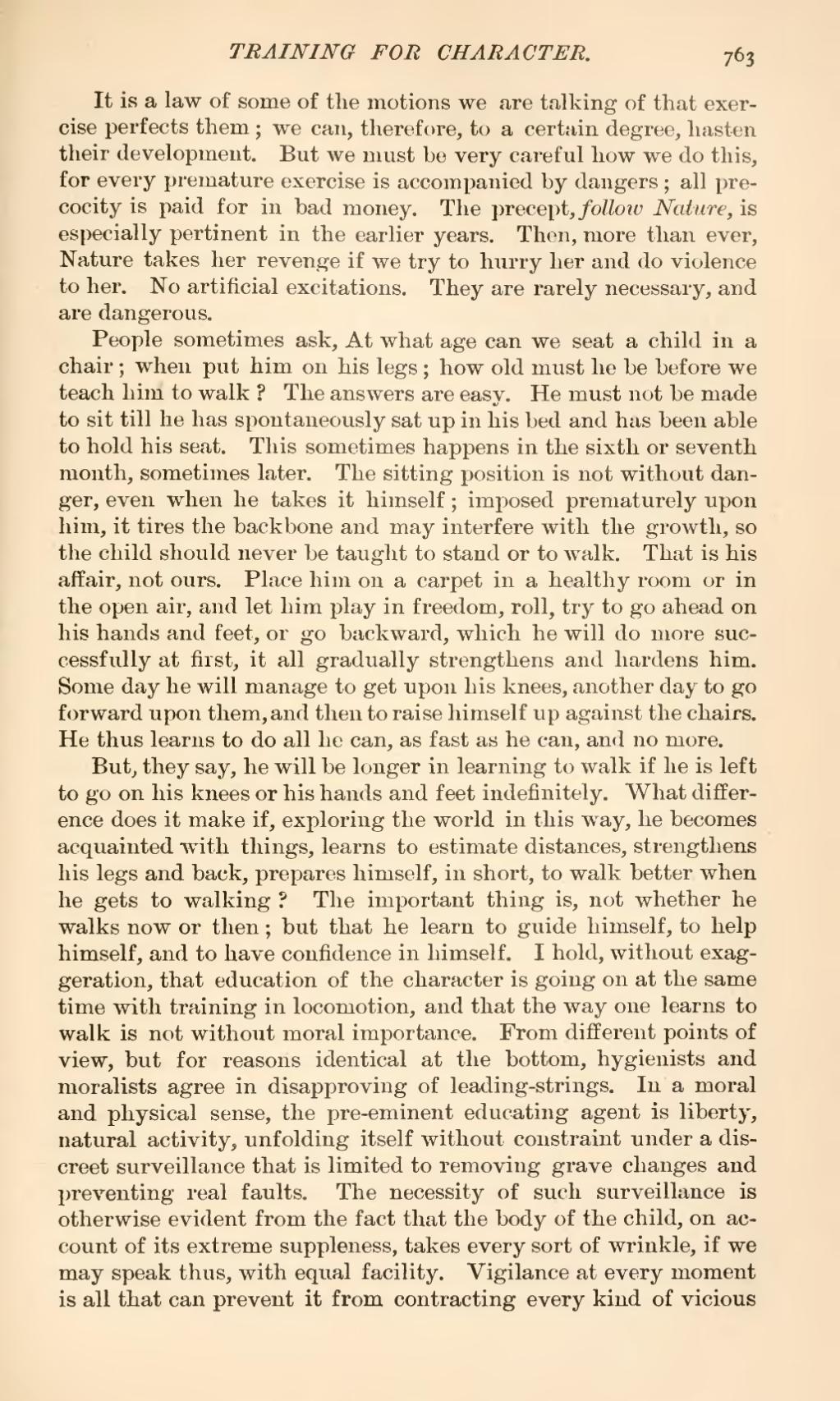It is a law of some of the motions we are talking of that exercise perfects them; we can, therefore, to a certain degree, hasten their development. But we must be very careful how we do this, for every premature exercise is accompanied by dangers; all precocity is paid for in bad money. The precept, follow Nature, is especially pertinent in the earlier years. Then, more than ever, Nature takes her revenge if we try to hurry her and do violence to her. No artificial excitations. They are rarely necessary, and are dangerous.
People sometimes ask, At what age can we seat a child in a chair; when put him on his legs; how old must he be before we teach him to walk? The answers are easy. He must not be made to sit till he has spontaneously sat up in his bed and has been able to hold his seat. This sometimes happens in the sixth or seventh month, sometimes later. The sitting position is not without danger, even when he takes it himself; imposed prematurely upon him, it tires the backbone and may interfere with the growth, so the child should never be taught to stand or to walk. That is his affair, not ours. Place him on a carpet in a healthy room or in the open air, and let him play in freedom, roll, try to go ahead on his hands and feet, or go backward, which he will do more successfully at first, it all gradually strengthens and hardens him. Some day he will manage to get upon his knees, another day to go forward upon them, and then to raise himself up against the chairs. He thus learns to do all he can, as fast as he can, and no more.
But, they say, he will be longer in learning to walk if he is left to go on his knees or his hands and feet indefinitely. What difference does it make if, exploring the world in this way, he becomes acquainted with things, learns to estimate distances, strengthens his legs and back, prepares himself, in short, to walk better when he gets to walking? The important thing is, not whether he walks now or then; but that he learn to guide himself, to help himself, and to have confidence in himself. I hold, without exaggeration, that education of the character is going on at the same time with training in locomotion, and that the way one learns to walk is not without moral importance. From different points of view, but for reasons identical at the bottom, hygienists and moralists agree in disapproving of leading-strings. In a moral and physical sense, the pre-eminent educating agent is liberty, natural activity, unfolding itself without constraint under a discreet surveillance that is limited to removing grave changes and preventing real faults. The necessity of such surveillance is otherwise evident from the fact that the body of the child, on account of its extreme suppleness, takes every sort of wrinkle, if we may speak thus, with equal facility. Vigilance at every moment is all that can prevent it from contracting every kind of vicious

